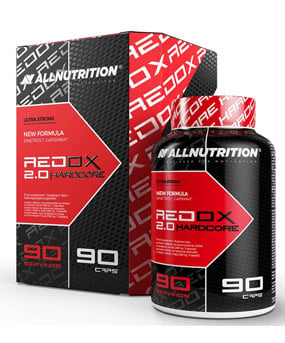Dla przypomnienia - to wskaznik ktory oblicza się dzieląc poziom glukozy we krwi po przeprowadzeniu testu żywnościowego z udziałem 50 gram węglowodanów, przez poziom glukozy uzyskany po spożyciu danego produktu

Teraz tak -
Mleko pełne 3% tł.-> IG 27
Mleko odtłuszczone -> IG 32
czyli - czyli po spozyciu porcji mleka poziom glukozy we krwi wzrosnie odpowiedni o 27 i 32%.
Ale czy to jest rownowazne ze wzrostem insuliny?
Jak wykazalo to badanie - nie do konca:
'Nine healthy subjects (six men, mean age 23·3 (SD 1·4)
years, mean BMI 23·5 (SD 1·6) kg/m2; three women,
mean age 24·3 (SD 1·2) years, mean BMI 24·3 (SD 1·3)
kg/m2) were studied on three separate occasions separated
by at least 2 d. Only eight subjects were reported for the
skimmed milk trials. The subjects recorded their dietary
and exercise patterns for 2 d prior to reporting to the laboratory
following an 8-10 h fast. The subjects were
asked to replicate their dietary and exercise patterns
before each subsequent test. Upon arrival at the laboratory
a catheter was placed in a forearm vein, and a baseline
blood sample was drawn. The catheter was kept patent
using normal saline after each blood draw. The subject
then consumed one of three test foods (glucose, whole
milk and skimmed milk) administered randomly. Each
food contained 25 g available carbohydrate. Blood was drawn 15, 30, 45, 60, 90 and 120 min after completion of
the meal and was analysed for plasma glucose and insulin
concentrations. Glucose was analysed using the hexokinase/
glucose-6-phosphate dehydrogenase method, and
insulin was measured using the DSL-10-1600 ACTIVE
Insulin ELISA Kit (Diagnostic Systems Laboratories,
Inc., Webster, TX, USA). Incremental area under the
curve (AUC) above baseline was calculated for both glucose
and insulin (Wolever et al. 1991). Glucose was set
as 100 and the GI and II of whole and skimmed milk
were presented as a percentage of the glucose and insulin
AUC after 25 g glucose. Prior to data collection the project
was approved by the Human Subjects Committee at Colorado
State University. Data were analysed using SPSS version
11.5 (Statistical Package for Social Science, SPSS
Inc., Chicago, IL, USA). Paired t tests were employed to
evaluate dependent variable differences between whole
and skimmed milks and a was set at 0·05. The relative dissociation
of the GI from the II for both skimmed and whole
milks was calculated using a previously described procedure
(Gannon et al. 1986). With this procedure the insulin
response to a test food is algebraically derived using the
glycaemic response to the test food and the glycaemic and
insulinaemic response to glucose by the same subjects. The
derived value is compared with the actual insulin AUC to
show the dissociation of the II from the GI.
Results
The results of the experiment are shown in Table 1 and
Fig. 1. Values are reported as means and standard deviations.
No significant differences existed between GI and
II for skimmed and whole milks. Significant (P,0·05)
differences were observed between the actual and predicted
areas under the insulin curves for both skimmed milk (predicted
1405 (SD 289) pmol £ min/l; actual 6152 (SD 1177)
pmol £ min/l) and whole milk (predicted 1564 (SD 339)
pmol £ min/l; actual 5939 (SD 1095) pmol £ min/l). Consequently,
a large and similar dissociation of the GI and
II existed for both whole milk (42 (SD 5) and 148 (SD
14)) and skimmed milk (37 (SD 9) and 140 (SD 13))'

http://journals.cambridge.org/download.php?file=/BJN/BJN93_02/S000711450500022Xa.pdf&code=c35e9e0d0645f6b300828a47df480146
jak widac w przypadku mleka (z reszta nie tylko mleka) odpowiedz insulinowa nie jest w scislym zwiazku z indeksem glikemicznym danego produktu.
mleko:
IG -> 41
II -> 148!
Idac dalej:
'Except for cheese with an insulin score of 45 (Holt et al.
1997) all dairy products (whole milk, skimmed milk,
yoghurt, ice cream, cottage cheese and fermented milk products)
have been shown to have potent insulinotropic properties
that may have far-reaching health effects, given the
hypothesis that insulinaemia is a modulator of insulin
resistance (Ludwig, 2002'
Jogurt
IG->62 ± 15
II->115 ± 13
Lody
IG->70 ± 19
II->89 ± 13
Zmieniony przez - solaros w dniu 2011-02-03 19:54:44
"Cóż jest trucizną?
Wszystko jest trucizną i nic nie jest trucizną, tylko dawka czyni, że dana substancja nie jest trucizną!".
BLOG: http://www.sfd.pl/t1033576.html


 Krzysztof Piekarz
Krzysztof Piekarz







